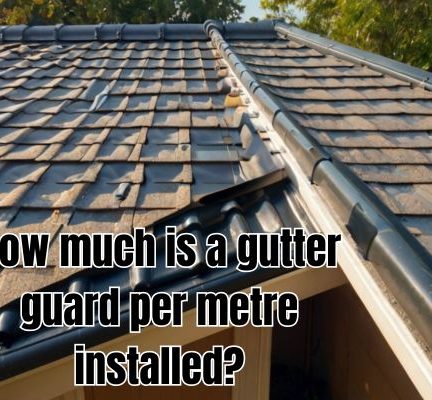If you’ve ever glanced up at the varied rooftops across New Jersey — from the historic brownstones of Jersey City to the suburban charm of Cherry Hill — you’ve noticed the diversity in roof shapes and slopes. But have you ever wondered why some roofs tilt steeply while others barely rise?

The answer lies in the roof pitch, the angle or slope of the roof. The golden rule for roof pitch is a practical principle that helps homeowners, builders, and roofers balance aesthetics, function, and local climate demands. With Charles Jimerson of CJ Commercial Roofing NJ, let’s unravel what this rule is, why it matters especially in New Jersey, and how it impacts everything from drainage to roofing materials.
Understanding Roof Pitch: The Basics
Roof pitch is the measure of a roof’s slope and is usually expressed as a ratio: rise over run. For example, a roof pitch of 6:12 means the roof rises 6 inches vertically for every 12 inches horizontally. This ratio directly affects water runoff, snow shedding, wind resistance, and even the interior space under the roof.
The Golden Rule for Roof Pitch: The Ideal Balance
The golden rule for roof pitch is to select a pitch steep enough to efficiently shed water and snow but not so steep as to cause unnecessary construction complexity or cost.
- Minimum pitch of 4:12 — This is generally regarded as the lowest slope for effective water runoff, preventing leaks.
- Optimal pitch range between 6:12 and 9:12 — Offers the best balance for durability, snow shedding, and wind resistance.
- Steeper than 9:12 — Common in areas with heavy snowfall or for architectural aesthetics but can increase costs and maintenance.
For New Jersey’s climate, with its mix of rain, snow, and occasional severe storms, a roof pitch in the 6:12 to 9:12 range is often ideal.
Why the Golden Rule Matters in New Jersey
Climate Considerations
New Jersey experiences all four seasons with notable winter snowfalls and spring to fall rain. Roof pitch is crucial for:
- Snow shedding: Steeper pitches help snow slide off, reducing the risk of ice dams and roof damage.
- Water runoff: Proper pitch prevents pooling and leaks during heavy rains common in New Jersey’s spring and summer months.
- Wind resistance: Roofs with the right pitch minimize wind uplift risks during coastal storms and hurricanes along the Jersey Shore.
Local Building Codes & Regulations
New Jersey counties such as Bergen, Essex, and Ocean have specific building codes that influence minimum and maximum allowable roof pitches. Contractors and homeowners must ensure compliance to avoid fines and ensure insurance coverage.
Architectural Styles in New Jersey
From Cape Cod cottages in Sussex County to Colonial Revival homes in Mercer County, roof pitch also defines the character of the structure. The golden rule helps balance style with structural integrity.
How Roof Pitch Influences Material Choice
In New Jersey, common roofing materials include asphalt shingles, metal roofing, slate, and cedar shakes. The golden rule of roof pitch also guides the choice:
- Asphalt shingles: Best for pitches of 4:12 and above. Below 4:12, water may pool, risking leaks.
- Metal roofing: Versatile but performs best on pitches 3:12 and above for water runoff.
- Slate and cedar shakes: Traditional materials suited for steeper pitches of 6:12 or higher.
Choosing the right pitch keeps roofing materials performing well longer and protects your investment.
Practical Tips for Homeowners and Builders in New Jersey
- Consult local building codes: Always start by checking municipal regulations, especially in coastal towns like Atlantic City or Long Branch.
- Use a roof pitch calculator: Tools help ensure your roof slope complies with the golden rule and local climate demands.
- Consider snow load: If your home is in northern New Jersey, factor in heavier snowfall.
- Think about aesthetics: The roof pitch contributes significantly to curb appeal—balance style with function.
- Hire licensed local roofing contractor: Experienced New Jersey roofers understand regional climate challenges and code requirements.
The Impact of Roof Pitch on Energy Efficiency
A roof’s pitch can also affect energy efficiency:
- Steeper roofs can offer better ventilation options, reducing heat buildup in summer.
- Appropriate pitch supports insulation layers, keeping homes warmer in cold New Jersey winters.
- Combined with modern roofing materials, a well-pitched roof can reduce heating and cooling bills.
Final Thoughts: The Golden Rule Is Your Roof’s Best Friend in New Jersey
Choosing the right roof pitch is not just about angles — it’s a smart investment in the longevity, safety, and beauty of your home. For New Jersey residents and builders, the golden rule of roof pitch is a trusted guideline that harmonizes climate realities, local building standards, architectural preferences, and material performance.
Remember: Aim for that sweet spot—typically a pitch between 6:12 and 9:12—to maximize snow and water runoff while maintaining structural integrity and style. Always get professional advice tailored to your location, from Hoboken’s urban roofs to the beach homes of Cape May.
FAQs on Roof Pitch for New Jersey Homeowners
Q1: Can I install a flat roof in New Jersey?
A1: Flat roofs are possible but require special waterproofing and drainage systems due to snow and rain.
Q2: How do I measure my roof pitch?
A2: Use a level and measuring tape to calculate rise over run or use a smartphone app designed for pitch measurement.
Q3: Does roof pitch affect my home insurance?
A3: Yes. Insurance companies often require roofs to meet certain pitch standards for wind and snow load coverage.
Q4: Are there grants or incentives for roof upgrades in New Jersey?
A4: Some local programs offer incentives for energy-efficient roofing; check with New Jersey’s energy office or local municipality.


